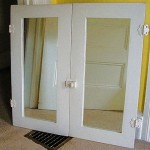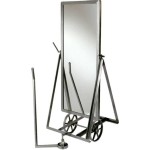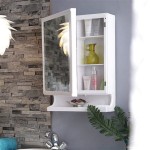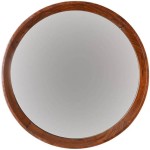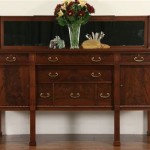How to Install a Bathroom Mirror Without Drilling
Drilling into bathroom tiles presents the risk of cracking or chipping them, particularly if the tiles are older or brittle. Fortunately, several effective methods allow for mirror installation without the need for drilling, offering a damage-free and often quicker alternative.
Understanding the Options
Several adhesive products are specifically designed for securely mounting mirrors onto various surfaces, including bathroom tiles. These adhesives come in different forms, including double-sided tape, construction adhesive, and specialized mirror mastic. Choosing the correct adhesive depends on the size and weight of the mirror, as well as the type of wall surface.
Preparing the Surface
Regardless of the chosen adhesive, proper surface preparation is crucial for achieving a strong and lasting bond. The wall surface must be thoroughly cleaned to remove any dust, dirt, soap residue, or mildew. A clean surface allows the adhesive to make full contact and form a secure bond. Use a suitable cleaning solution, such as isopropyl alcohol, and ensure the surface is completely dry before proceeding.
Measuring and Marking
Accurate measurements are essential for proper mirror placement. Measure the mirror dimensions and mark the desired location on the wall using a level and a pencil. Consider the surrounding fixtures and ensure sufficient clearance. Use painter's tape to create a level guideline for the bottom edge of the mirror. This serves as a reference point during installation, ensuring the mirror is straight.
Applying Double-Sided Mounting Tape
For lighter mirrors, heavy-duty double-sided mounting tape designed specifically for mirrors can be a viable option. Apply the tape vertically along the back of the mirror in several strips, ensuring good coverage. Peel off the protective backing and carefully align the mirror with the marked guidelines on the wall, pressing firmly to ensure good contact with the adhesive.
Using Construction Adhesive
Construction adhesive provides a stronger bond than double-sided tape and is suitable for heavier mirrors. Apply the adhesive to the back of the mirror in a zig-zag pattern or in several evenly spaced vertical lines. This pattern ensures adequate coverage and a strong bond. Carefully align the mirror with the wall markings and press firmly into place. Depending on the specific adhesive, temporary supports may be necessary while the adhesive cures.
Employing Mirror Mastic
Mirror mastic is a specialized adhesive designed specifically for bonding mirrors to various surfaces. It typically offers a high initial grab and strong ultimate bond strength. Apply mirror mastic to the back of the mirror in a zig-zag pattern or in evenly spaced vertical lines, similar to the application of construction adhesive. Carefully position the mirror on the wall, aligning it with the marked guidelines, and press firmly. Temporary supports are often recommended while the mastic cures.
Adding Support for Large Mirrors
For larger or heavier mirrors, additional support may be necessary to prevent slippage during the curing process. Small mirror clips or brackets can be adhered to the wall beneath the mirror to provide temporary support. These supports can be removed once the adhesive has fully cured. Alternatively, temporary wooden supports can be wedged between the bottom edge of the mirror and the countertop or vanity.
Finishing Touches
After the adhesive has cured according to the manufacturer's instructions, carefully remove any temporary supports. Clean any excess adhesive from around the edges of the mirror using a suitable solvent. Inspect the mirror installation to ensure it is secure and level. Seal the perimeter of the mirror with a neutral-cure silicone sealant to prevent moisture penetration, which can damage the mirror backing over time. Applying sealant also provides a finished look and further secures the mirror.
Choosing the Right Method
Selecting the appropriate method depends on several factors. Consider the size and weight of the mirror as the primary determining factor. Lightweight mirrors can often be installed using double-sided tape, while heavier mirrors require stronger adhesives like construction adhesive or mirror mastic. The condition of the wall surface also plays a role. For uneven surfaces, a thicker adhesive like mirror mastic might be more suitable.
Safety Precautions
Always follow the manufacturer's instructions for the chosen adhesive or mounting system. Wear appropriate safety gear, such as gloves and eye protection, when working with adhesives and cleaning solutions. Ensure adequate ventilation during the application and curing process of adhesives. If working with a large or heavy mirror, seek assistance to prevent accidents during installation.

3 Simple Ways To Hang A Mirror On Wall Without Nails Wikihow

3 Simple Ways To Hang A Mirror On Wall Without Nails Wikihow

How To Install A Mirror Without Frame Merrypad

How To Hang A Mirror On Wall Without Nails

How To Hang A Hanging Mirror Without Accompanying Hardware

How To Hang A Heavy Mirror In 5 Simple Steps

3 Simple Ways To Hang A Mirror On Wall Without Nails Wikihow

How To Hang Mirrors On Tile 3 Ways A Bonus The Palette Muse

How To Hang A Mirror On Tile Wall Remington Avenue

How To Hang A Heavy Mirror At Home


